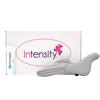


This therefore enables a defined control of afferent input into the central nervous system (CNS) and fine-tunes the magnitude of ABP drop 8. The overall process mimics spontaneous activation of the baroreceptor reflex, albeit bypassing the process of ABP-induced activation of mechanosensitive baroreceptors in the carotid sinus and the aortic arch. The results of activating baroafferents include inhibition of sympathetic drive to the heart and vasculature and increased vagal parasympathetic drive to the heart, which together translate into decreases in peripheral vascular resistances, cardiac output, heart rate and therefore ABP 5, 6, 7. This intervention alters central autonomic drive by directly enhancing the activity of baroreceptor afferent neurons, a set of nerve fibers that are frontline sensors that respond to fluctuations in ABP and relay this information directly to the nucleus tractus solitarius (NTS) in the brainstem, which in turn sends information to other cardiovascular control centers within the brainstem and higher regions 5. In the recent years, device-based neurostimulation has gained popularity as a novel means to control hypertension. As a result, there is still a persistent need for novel therapeutic strategies aimed at for instance, lowering sympathetic nerve activity (SNA), to decrease arterial blood pressure (ABP) within the hypertensive population. However, resistant hypertensive patients, who fail to adequately respond to available treatment options, remain under-treated and therefore highly predisposed to increased risk of cardiovascular events. Currently, dietary modification, salt restriction, regular exercise and antihypertensive medications remain the treatment(s) of choice for hypertensive subjects 4. This common clinical condition increases the risk for heart disease and stroke, both of which are leading causes of morbidity and mortality in this patient population 3.

This approach enables low energy consumption and markedly lowers the excessive decreases in MAP and hemodynamic disturbances elicited by continuous high-charge injection protocols.Ĭhronic hypertension affects more than one billion people worldwide 1 and is a major risk factor for sudden cardiac death 2. We conclude from these findings that “low intensity intermittent” electrical stimulation is an effective alternate way for neuromodulation of the aortic baroreceptor afferents and to evoke a required restoration of MAP levels in spontaneously hypertensive rats. Continuous high frequency stimulation at 0.4 mA and 0.2 ms produced larger reductions in MAP, HR, MVR and FVR compared with all low frequency and/or intermittent high frequency stimulations. Continuous and intermittent low frequency stimulation at 0.4 mA and 0.2 ms produced similar sustained decreases in MAP, HR, MVR and FVR. Higher pulse amplitudes (0.4 mA) produced a median MAP reduction of 28 ± 4 mmHg at 0.2 ms and 5 Hz, with no added benefit seen above 0.4 mA. Lower pulse amplitudes (0.2 mA) produced 9 ± 2 to 18 ± 2 mmHg decreases in MAP. We also assessed the effects of continuous (20 s) versus intermittent (5 s ON/3 s OFF and 5 s ON/3 s OFF for 20 s) stimulation on MAP, heart rate (HR), mesenteric (MVR) and femoral (FVR) vascular resistance using low (5 Hz) and high (15 Hz) frequencies. Stimulations of 20 s were delivered to the left aortic depressor nerve (ADN) of these rats using low ranges of pulse amplitudes (≤ 0.6 mA), widths (≤ 0.5 ms) and frequencies (≤ 5 Hz). The objective of the present study was to identify optimal low-charge nerve stimulation parameters that would provide a clinically-relevant (20–30 mmHg) decrease in mean arterial pressure (MAP) in anesthetized spontaneously hypertensive rats. Published studies have used supramaximal stimulations, which are unphysiological and energy inefficient. Carotid baroreceptor stimulation has been clinically explored for antihypertensive benefits, but neuromodulation of aortic baroreceptor afferents remains unexplored for potential translation into the clinic.


 0 kommentar(er)
0 kommentar(er)
